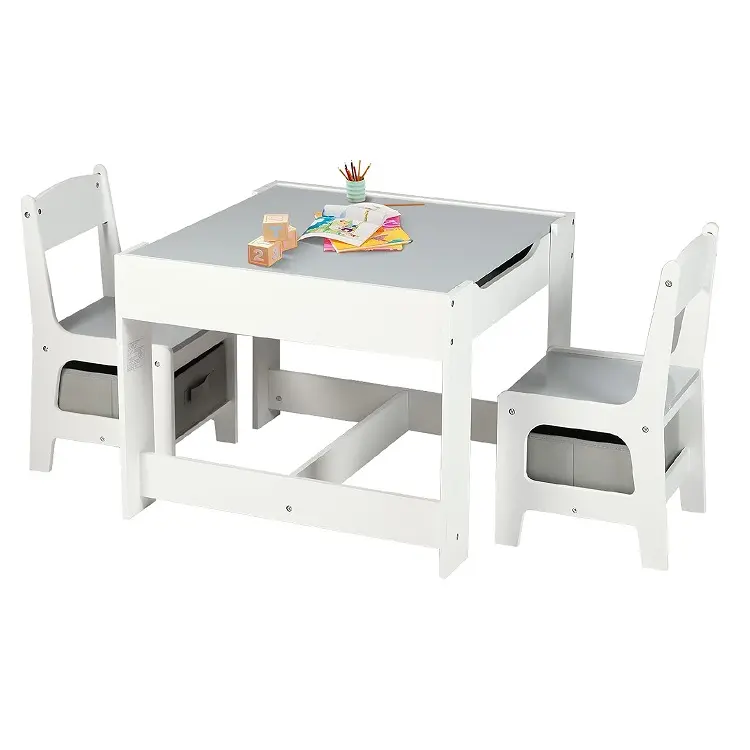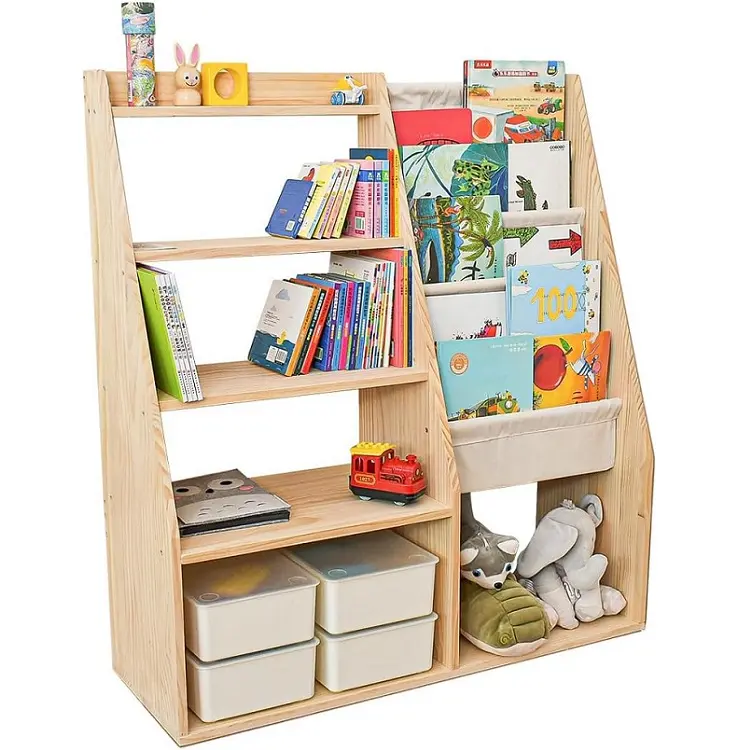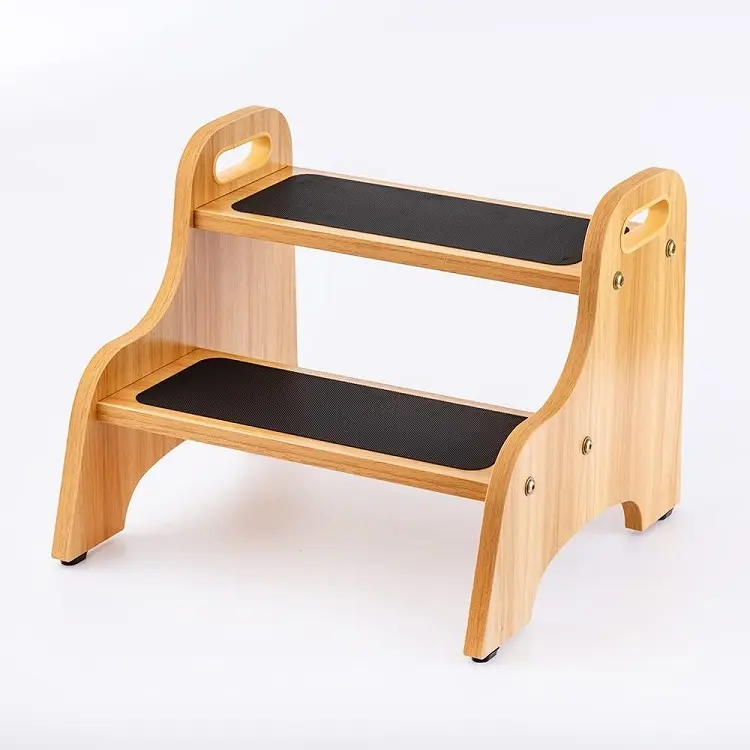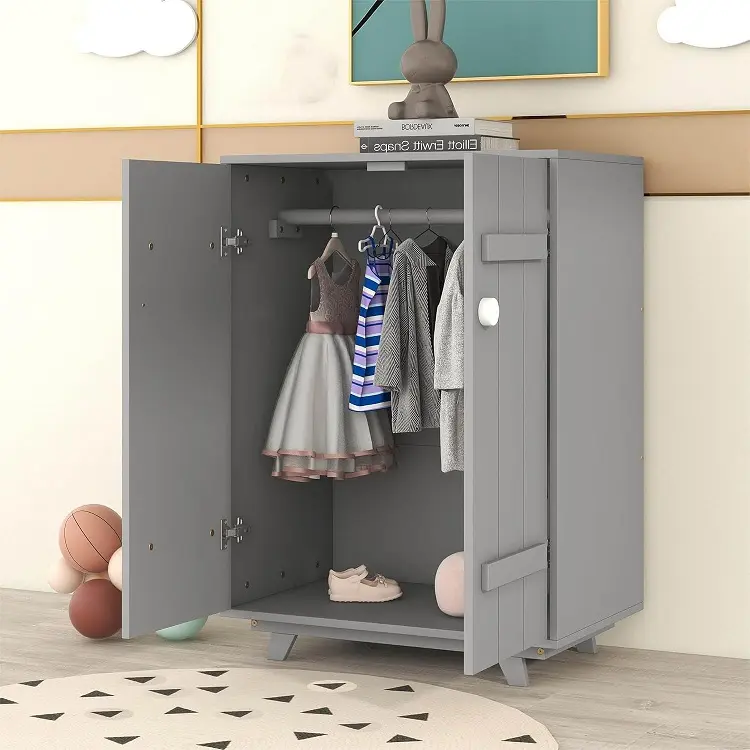Montessori furniture is more than just child-sized tables and chairs; it's a philosophy brought to life in the home and classroom. This article explores the profound importance of Montessori furniture in child development, explaining how it fosters independence and supports your child’s learning. If you're curious about creating a nurturing and empowering environment for your little one, keep reading to discover the benefits of Montessori furniture and how it can make a real difference.
What is Montessori Furniture and Why is it Important for Child Development?
Montessori furniture is specifically designed to support the Montessori method, an educational approach developed by Maria Montessori, an Italian physician. This method emphasizes child-centered learning, independence, and hands-on exploration. Unlike traditional furniture that often caters to adults, Montessori furniture is child-sized, accessible, and designed to allow children to interact with their environment more effectively.
The importance of Montessori furniture lies in its ability to create an environment where children to explore freely and safely. By providing furniture within their reach and scale, we empower them to take ownership of their space and activities. This fosters a sense of autonomy and self-confidence from a young age, crucial elements in healthy child development. Imagine a child struggling to reach a book on a high shelf versus a child easily selecting a book from a Montessori shelving unit – the difference in their experience and sense of capability is significant.
Understanding the Core Principles of the Montessori Method
To truly appreciate Montessori furniture, it's essential to understand the underlying principles of the Montessori method. This montessori educational philosophy is built upon observing children and understanding their natural developmental needs. Key principles of montessori education include:
- Respect for the Child: Recognizing each child as a unique individual with their own pace of learning and development.
- The Absorbent Mind: Understanding that young children absorb information from their environment effortlessly, making the environment crucial.
- Sensitive Periods: Identifying specific periods in a child's life where they are particularly receptive to learning certain skills, like language or movement.
- Prepared Environment: Creating a carefully designed environment that is orderly, beautiful, and supports the child's independence and exploration.
- Self-Directed Learning: Encouraging children to choose their activities and learn at their own pace, fostering intrinsic motivation.
These principles of montessori are not just abstract ideas; they are put into practice through carefully chosen materials and, importantly, Montessori furniture. The furniture allows these principles to come alive, creating a tangible and supportive learning experience.
How Does Montessori Philosophy Influence Montessori Furniture Design?
The montessori philosophy deeply influences Montessori furniture design. It's not just about making smaller versions of adult furniture; it’s about rethinking furniture from a child's perspective. The core idea is to design furniture that empowers children to take initiative and allow children to easily access their surroundings. This means considering several key design elements:
- Child-Centric Scale: Montessori furniture is designed to be child-sized. This child-sized furniture ensures that everything is within reach, promoting independence in daily tasks. Think of a Montessori table and chair set – perfectly proportioned for a young child to sit comfortably and work.
- Accessibility and Visibility: Montessori shelving and storage solutions are open and low, allowing children to see and easily access materials. This accessibility encourages them to choose activities and put things away independently.
- Simplicity and Aesthetics: Montessori furniture design often favors simple, clean lines and natural materials like wood. This aesthetic creates a calming and uncluttered environment, reducing distractions and focusing the child’s attention on learning.
- Functionality and Purpose: Each piece of furniture in a Montessori environment has a clear purpose. Whether it's a shelve for books, a table and chair for activities, or a montessori bed for rest, each item is thoughtfully chosen to support specific aspects of child development.
This thoughtful Montessori furniture design directly translates the principles of montessori into practical, everyday tools for learning and growth.
What are the Key Principles of Montessori Furniture?
Beyond the general design philosophy, there are specific key principles of Montessori furniture that define its effectiveness:
- Independence: Perhaps the most crucial principle. Montessori furniture empowers children to take care of themselves and their environment without constant adult assistance. Low shelves, child-sized tables, and accessible storage all contribute to this.
- Freedom of Movement: Montessori environments encourage movement. Furniture is lightweight and arranged to allow children to move freely and safely. Even a Montessori bed frame, like a floor bed, promotes freedom as the child can get in and out of bed whenever they choose.
- Order and Structure: While promoting freedom, Montessori furniture should also help create order. Designated spaces for materials and activities, like specific shelves for different types of toys or books, help children understand organization and develop a sense of structure.
- Beauty and Harmony: Montessori classrooms and homes strive to be aesthetically pleasing. Natural materials, soft colors, and uncluttered spaces contribute to a sense of calm and beauty, making the environment inviting and conducive to learning.
- Practical Life Skills: Many pieces of Montessori furniture support practical life activities. A Montessori weaning table, for example, is designed to help toddlers participate in meal times and develop self-feeding skills. Similarly, a step stool in the bathroom allows them to participate in routines like brush their teeth or wash their hands.
These key principles ensure that Montessori furniture is not just visually appealing but also deeply functional in supporting a child's holistic development.
Why is Child-Sized Furniture Like a Montessori Table and Chair Set So Effective?
The effectiveness of child-sized furniture, like the Montessori table and chair set, is rooted in its ability to match a child's physical proportions and developmental needs. Imagine an adult trying to work at a table that's too high or sit on a chair that's too large – it would be uncomfortable and inefficient. The same applies to children in environments designed for adults.
- Comfort and Focus: Child-sized tables and chairs provide comfort, allowing children to focus on their activities without physical distractions. When a chair is the right height, a child’s feet can rest comfortably on the floor, promoting better posture and concentration.
- Independence in Activities: A Montessori table and chair set allows the child to engage in various activities independently, from drawing and puzzles to Montessori weaning and snack time. They can sit down, stand up, and move around with ease, fostering autonomy.
- Encourages Proper Posture: Child-sized furniture supports healthy physical development. Chairs that are the right height encourage good posture, which is crucial for physical comfort and long-term health.
- Sense of Belonging: When children have furniture that is scaled to them, it makes them child feel valued and capable within their environment. It signals that the space is designed with their needs in mind, fostering a sense of belonging and self-confidence.

A perfectly sized table and chair set encourages focused activity.
In essence, child-sized furniture is effective because it respects a child’s physical and developmental stage, making learning and exploration more comfortable and accessible. Consider our Kids Wood Table & 2 Chairs Set, designed with these principles in mind.
How Does Montessori Shelving Foster Independence and Accessibility?
Montessori shelving is a cornerstone of the prepared environment, playing a vital role in fostering independence and accessibility. Unlike tall, closed cabinets, montessori shelving units are typically low, open, and designed to display materials attractively.
- Visual Accessibility: Open shelves allow children to easily access and see all the materials at a glance. This visual accessibility is crucial for young children who are still developing their organizational skills. They can easily choose what they want to work with based on visual cues.
- Choice and Decision-Making: When materials are displayed on shelves in an organized and appealing manner, it provides your child with the child the opportunity to make choices. This ability to choose their activities is central to self-directed learning and fosters a sense of autonomy.
- Order and Organization: Montessori shelving encourages order. By having designated places for each item, children learn to organize and categorize materials. This promotes cognitive development and a sense of responsibility for their environment.
- Independent Access and Return: Low shelves mean children can easily access materials without needing adult help and, importantly, they can return materials to their designated spots after use. This reinforces the concept of responsibility and contributes to maintaining an orderly environment.
- Promotes Exploration and Curiosity: Attractive and accessible shelves invite children to explore. When books, toys, and learning materials are beautifully displayed, it sparks curiosity and encourages children to engage with their environment.

Open shelving encourages visual selection and independent access.
Consider our Children's Bookcase & Toy Organizer, designed to maximize accessibility and promote independent material selection. Montessori shelving is not just storage; it's a tool for empowerment and learning.
What are the Broad Benefits of Montessori Furniture for Child Development?
The benefits of Montessori furniture extend far beyond just physical comfort and convenience. It plays a crucial role in supporting holistic child development, impacting various areas:
- Independence and Autonomy: As discussed, Montessori furniture is designed to foster independence. By allowing children to easily access their environment and materials, it fosters a sense of autonomy and self-reliance. This is fundamental for personal development.
- Motor Skills Development: Interacting with Montessori furniture helps refine both gross and fine motor skills. Reaching for items on shelves, manipulating materials at a table and chair, and moving around furniture all contribute to physical coordination and control.
- Cognitive Development: The organized and purposeful nature of Montessori environments, facilitated by appropriate furniture, supports cognitive development. Children learn to categorize, organize, and make choices, enhancing their problem-solving and decision-making skills.
- Social and Emotional Development: Montessori furniture in classroom settings also supports social development. Children learn to share spaces, respect materials, and work collaboratively in an environment designed for mutual respect and independence. The self-confidence gained through independence also positively impacts emotional well-being.
- Sensory Development: Natural materials often used in Montessori furniture, like wood, provide rich sensory experiences. The textures, smells, and visual warmth of natural materials contribute to sensory development and create a more engaging and grounding environment.

Step stools are practical for reaching and participating in daily tasks.
In short, Montessori furniture supports the development of a well-rounded child, nurturing independence, physical skills, cognitive abilities, and social-emotional well-being. Even simple items like our Wooden 2 Step Stools for Kids play a role in fostering independence by enabling children to reach sinks and countertops.
Can You Give Practical Examples of Montessori Furniture for Every Room?
Montessori furniture is not limited to classrooms; it can be beautifully integrated into every room of your home to create a consistent and supportive environment. Here are some practical examples of Montessori furniture for different spaces:
- Bedroom:
- Floor Bed: Instead of a traditional crib or high bed, a montessori bed like a floor bed or toddler bed allows the child to access their bed whenever they need rest, promoting autonomy and freedom of movement. Our Classic Design Toddler Bed in Natural is a great example.
- Low Wardrobe or Dresser: Child-sized wardrobes or dressers with accessible drawers and hanging rods allow your child to choose their clothes and get dressed independently.
- Playroom/Living Area:
- Montessori Shelving: Open shelves for toys, books, and learning materials, as discussed earlier.
- Activity Table: A small activity table and chairs set for art, puzzles, and other hands-on activities.
- Sensory Table: A table designed for sensory play with water, sand, or other materials, like our Sensory Table & Chair Set with Storage Box.
- Kitchen:
- Learning Tower/Step Stool: A safe and sturdy step stool or learning tower allows them to participate in kitchen activities, like helping with cooking or washing dishes.
- Montessori Weaning Table: A small, low table and chair set specifically for meal times, promoting self-feeding and social interaction during meals.
- Bathroom:
- Step Stool: To reach the sink for handwashing and teeth brushing.
- Low Mirror: A mirror placed at child’s height to encourage self-care activities.
By thoughtfully incorporating Montessori furniture into each room, you can create a home environment that consistently supports your child’s learning and development.
What Key Principles Should You Consider When Choosing Montessori Furniture?
When selecting Montessori furniture, keep these key principles in mind to ensure you're making the best choices for your child:
- Size and Scale: Always prioritize child-sized furniture. Make sure tables, chairs, beds, and shelves are appropriately scaled to your child’s height and reach.
- Material Quality and Safety: Opt for high-quality, durable, and safe materials, ideally natural materials like solid wood. Ensure finishes are non-toxic and safe for children. Our company, as a "Quality Solid Wood Kids Furniture Manufacturer", prioritizes these aspects.
- Functionality and Purpose: Choose pieces that serve a clear purpose in supporting your child’s activities and development. Avoid unnecessary or purely decorative items.
- Simplicity and Aesthetics: Select furniture with simple designs and a calming aesthetic. Avoid overly stimulating colors or patterns that can be distracting.
- Durability and Longevity: Invest in well-made furniture that will last as your child grows. Solid wood furniture is often a great choice for its durability.

A child-sized wardrobe promotes independent dressing.
By considering these key principles, you can confidently choose appropriate furniture that truly aligns with the Montessori pedagogy and supports your child’s growth. For example, our Wooden Kids Wardrobe with Hanging Rod is designed with child-accessibility and durability in mind.
Where Can You Find the Best Options for High-Quality Montessori Furniture?
Finding high-quality Montessori furniture is crucial to ensure its effectiveness and longevity. Here are some avenues to explore:
- Specialized Montessori Furniture Retailers: Look for retailers that specialize in Montessori or child-centered furniture. These stores often offer curated selections that adhere to Montessori principles.
- Online Marketplaces: Websites like Etsy or specialized online furniture stores can offer a range of Montessori furniture options, often from smaller, independent makers.
- IKEA: While not exclusively Montessori, IKEA offers many pieces that can be adapted for a Montessori environment, particularly for storage and shelving. IKEA’s simple, functional designs and accessibility make them best options for some budget-conscious families.
- Direct from Manufacturers: Consider purchasing directly from manufacturers, especially if you are looking to furnish a classroom or daycare center. As a factory with 7 production lines in China, specializing in Children's Solid Wood Furniture, we offer B2B solutions and can provide high-quality Montessori furniture for retailers, boutiques, educational institutions, and more. We export to the USA, North America, Europe, and Australia, and participate in exhibitions to showcase our products.
When sourcing Montessori furniture, prioritize quality and safety. Don't hesitate to ask about materials, certifications (like safety standards ASTM or EN71), and manufacturing processes, especially when considering suppliers from overseas. For bulk purchases and B2B inquiries, exploring manufacturers directly can be a cost-effective and reliable option.
Key Takeaways:
- Montessori furniture is designed to foster independence and support child development by being child-sized, accessible, and functional.
- The principles of Montessori furniture are rooted in the montessori philosophy, emphasizing autonomy, freedom of movement, order, and beauty.
- Child-sized furniture, like Montessori table and chair sets and shelves, are effective because they are tailored to a child’s physical and developmental needs.
- Montessori furniture offers broad benefits, including enhanced motor skills, cognitive development, social development, and sensory development.
- You can incorporate Montessori furniture into every room of your home to create a consistent and supportive environment.
- When choosing Montessori furniture, prioritize size, material quality, functionality, simplicity, and durability.
- Explore specialized retailers, online marketplaces, IKEA, and direct manufacturers to find the best options for high-quality Montessori furniture.
By understanding and implementing the principles of Montessori furniture, you can create nurturing spaces that truly encourage your child to explore, learn, and grow with confidence.
Post time: Jan-23-2025





